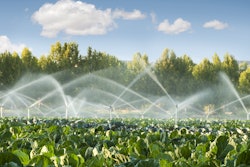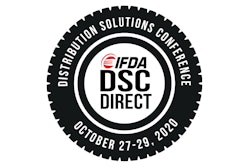
Smithfield Foods, Inc. became the first major protein company to commit to becoming carbon negative in all company-owned operations in the United States by 2030. The company will go beyond carbon neutrality to effectively remove more carbon from the atmosphere than it emits. It will achieve this goal without purchasing carbon credits to offset emissions.
"As the world grapples with environmental challenges impacting our planet, consumers are looking to companies to take deliberate, bold action to address issues such as climate change," said Kenneth M. Sullivan, president and chief executive officer, Smithfield Foods. "The world is at an inflection point. To feed a growing world population, with finite resources available to grow and produce the food we need, we must limit our environmental impact. At Smithfield, we are utilizing our expansive reach to lead efforts to eliminate our carbon footprint in our company-owned operations and remove greenhouse gases from the atmosphere."
This announcement builds on Smithfield's ambitious goal to reduce greenhouse gas (GHG) emissions 25% by 2025 across its entire supply chain, which it announced in 2016. Like today's goal, this previous commitment was the first from a major protein company, establishing a far-reaching GHG reduction goal across its entire supply chain. The following year, the company launched Smithfield Renewables, a platform to unite its carbon reduction and renewable energy efforts. To become carbon negative in its U.S. company-owned operations, Smithfield will tap the resources and expertise of a wide range of partners to accelerate projects within its Smithfield Renewables program, while continuing to drive progress toward its '25 by 25' goal across its scope 1-3 emissions.
"Smithfield pioneered bold carbon emission targets in our industry, and we are continuing to innovate long-term solutions across our industry-leading sustainability program," added Stewart Leeth, vice president and chief sustainability officer, Smithfield Foods. "To achieve this ambitious new carbon negative objective, work is already underway and will include a variety of strategies, including renewable natural gas ventures, regenerative agricultural practices, improvements in our animals' diets, renewable electricity purchases and transportation, logistics and packaging projects."
On Smithfield's Farms
Some of the most significant opportunities for carbon improvements are located on Smithfield's company-owned farms. There, Smithfield is focusing efforts on ensuring crops are grown with efficient fertilizer and soil health practices, and implementing renewable energy projects that reduce emissions through renewable natural gas (RNG), and wind and solar power generation.
The hallmark of its carbon reduction efforts, Smithfield's innovative industry-leading biogas program captures methane from hog manure on farms and transforms it into RNG. Smithfield and its partners are implementing RNG projects across the majority of company-owned finishing spaces in North Carolina, Utah, Virginia and Missouri, as well as other states.
"Renewable energy is a cornerstone of our strategy to become carbon negative, and we have spent decades investing in and perfecting our approach," said Kraig Westerbeek, senior director of Smithfield Renewables and hog production environmental affairs, Smithfield Foods. "Capturing methane and transforming it into RNG removes at least 25 times more GHGs from the atmosphere than are released from its end use in power plants, homes, vehicles and businesses, creating a cleaner environment and even more sustainable farms."
At Smithfield's Food Production Facilities
Smithfield's focus on reducing emissions extends to its more than 40 processing facilities across the United States. Protein production demands significant amounts of energy and the company will aggressively reduce its consumption by implementing ongoing operational efficiency projects that result in lower energy use, including refrigeration, lighting and other equipment projects. It also is increasing the use of renewable energy across its footprint. The company is a partner in a wind power project that when complete is projected to account for more than 15 percent of its total energy usage across the United States. Additionally, at multiple processing facilities, the company is generating renewable natural gas from its wastewater treatment operations to power their modified steam boilers, or in the case of its largest processing facility in Tar Heel, NC, to power local homes and businesses.
"Smithfield's carbon negative announcement is another industry first and demonstrates its continued progress toward ambitious commitments that are having a real impact on our environment," added Steve Troxler, North Carolina Agriculture Commissioner. "Smithfield is paving the way as a model for other North Carolina businesses to take big steps that minimize their impact and protect our natural resources for the generations to come."
Last year, Smithfield set an ambitious goal to reduce overall solid waste sent to landfills by 75% by 2025 and certify three-quarters of its domestic facilities as zero-waste-to-landfill by 2025. The company will continue to minimize waste and recycle or reuse materials that were once considered garbage, ultimately reducing waste sent to landfills in communities throughout the country.
Transportation and Logistics
Reducing miles driven throughout the company's operations – transporting livestock from farms and moving products to customers across the U.S. – is a critical initiative to cut carbon emissions. Smithfield's logistics optimization initiative is reducing the number of regional distribution centers and enhancing transportation routes to be shorter and more efficient. Current efforts reduce distance traveled each year by approximately 11.2 million miles and reduce diesel consumption by 1.6 million gallons, equating to an annual GHG emission reduction of nearly 13,000 metric tons of carbon dioxide equivalent (CO2e), or taking more than 2,800 passenger cars off the road annually.
Conservation Activities
Agriculture and forests are essential to addressing climate change. Smithfield will foster and enhance programs to sequester more carbon in agricultural lands and natural ecosystems. One example is Smithfield's partnership in the Monarch Butterfly Habitat Exchange (The Exchange), a program that aims to restore 1.5 million acres of high-quality breeding and nectaring habitat along the butterflies' migration route. This includes reintroducing native species desired by monarchs on lands surrounding Smithfield hog farms in Missouri. Moving forward, the company will continue to identify new opportunities focused on conservation.
"Today's announcement by Smithfield Foods of their first-in-class carbon negative commitment showcases leadership on climate action, delivering positive impact today and proactively addressing the climate crisis of tomorrow," added Rep. A. Donald McEachin (VA-04). "I am pleased with Smithfield's dedication to sustainability in Virginia's Fourth Congressional District."














